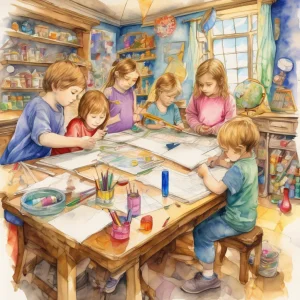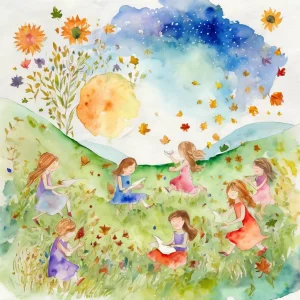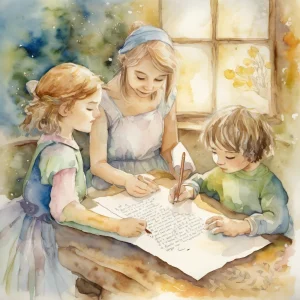Activity
Similar Activities
Enchanted Musical Storytime Adventure
Children’s Age: 2–2.5 years
Activity Duration: 5 – 15 minutes
Join the "Musical Storytime Adventure" for children aged 24 to 30 months, focusing on self-regulation development. Gather favorite storybooks, musical instruments, a cozy rug, and …
Activity Duration: 5 – 15 minutes
Melodies of Wisdom: Musical Storytelling Circle
Children’s Age: 10–14 years
Activity Duration: 20 – 45 minutes
The "Musical Storytelling Circle" activity is designed for children aged 10 to 14 to boost communication skills through interactive storytelling with music and instruments. Partici…
Activity Duration: 20 – 45 minutes
Ecosystem Adventure Board Game - Nature's Quest
Children’s Age: 7–9 years
Activity Duration: 10 – 25 minutes
An interactive board game where children explore and learn about ecosystems through challenges and tasks.
Activity Duration: 10 – 25 minutes
Enchanted Measurement Adventures: Measuring Real-World Objects Scavenger Hunt
Children’s Age: 5–10 years
Activity Duration: 10 – 20 minutes
An educational activity engaging children in measuring real-world objects through a fun scavenger hunt.
Activity Duration: 10 – 20 minutes
Whispers of the Seasons: Seasonal Collage Exploration
Children’s Age: 5–6 years
Activity Duration: 10 minutes
Engaging activity where children create collages representing different seasons.
Activity Duration: 10 minutes
Animal Feast Adventure: A Whimsical Feeding Frenzy
Children’s Age: 5–8 years
Activity Duration: 10 – 25 minutes
An interactive activity where children feed toy animals with pretend food, promoting communication skills and adaptive development.
Activity Duration: 10 – 25 minutes
Nature's Objects: Exploring Buoyancy Adventure
Children’s Age: 6–7 years
Activity Duration: 10 minutes
An engaging hands-on activity for children aged 6-7 to explore buoyancy with natural objects.
Activity Duration: 10 minutes
Gratitude Journey: Writing Thank-You Notes Experiment
Children’s Age: 6–8 years
Activity Duration: 10 – 20 minutes
A creative activity for children aged 7-8 to write thank-you notes, enhancing cognitive and communication skills.
Activity Duration: 10 – 20 minutes
Enchanted Discovery: Nature Scavenger Hunt with a Twist
Children’s Age: 7–8 years
Activity Duration: 10 minutes
An outdoor educational activity for children aged 7-8 involving a nature scavenger hunt with historical items, leading to a nature collage creation.
Activity Duration: 10 minutes
Musical Kindness Quilt
Children’s Age: 8–10 years
Activity Duration: 10 – 20 minutes
The "Musical Kindness Quilt" activity engages 9-year-old children in learning about famous musicians while enhancing communication skills and cognitive development. Children choo…
Activity Duration: 10 – 20 minutes
Cosmic Conundrum Chefs: Space Word Problem Adventure
Children’s Age: 7–8 years
Activity Duration: 10 – 20 minutes
Let's play Space Word Problem Chefs! We'll use paper, pencils, and space-themed stickers to explore language and problem-solving. Set up a cozy spot, grab your supplies, and get re…
Activity Duration: 10 – 20 minutes
Space Collage Adventure: Crafting Cosmic Creativity Journey
Children’s Age: 3–8 years
Activity Duration: 10 – 20 minutes
Embark on a Space Collage Adventure where you can make cool space scenes using paper, scissors, and glue. Learn about space while creating your own unique collages with markers and…
Activity Duration: 10 – 20 minutes




























